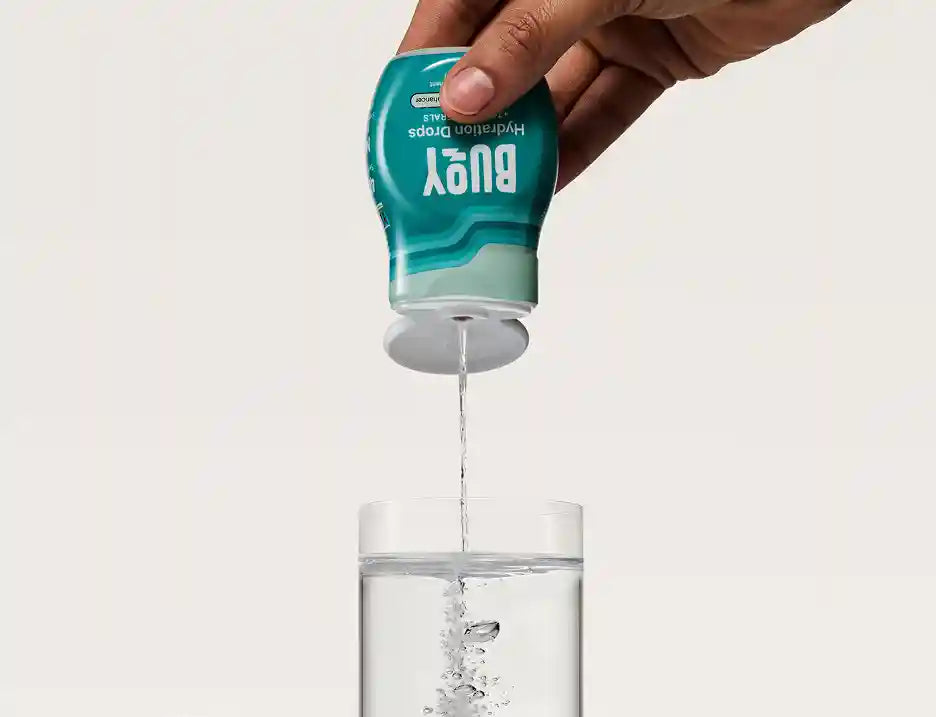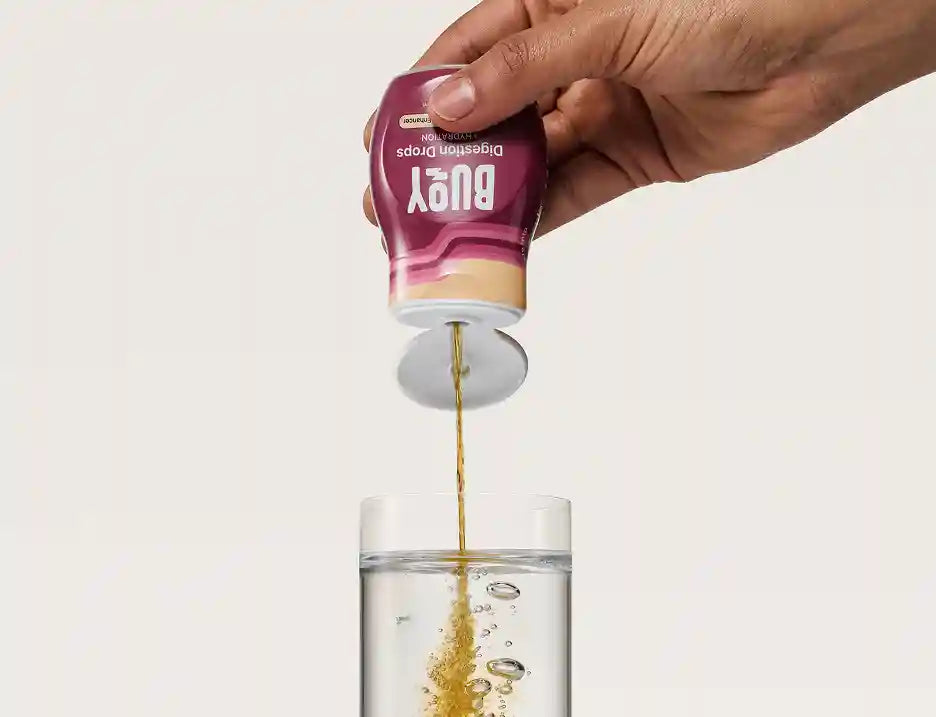
POTS Syndrome Triggers: 8 Do’s & Don’ts to Manage Your Symptoms
Share
Living with Postural Orthostatic Tachycardia Syndrome (POTS) can be challenging, but understanding and managing your triggers can greatly improve your quality of life. While triggers can vary from person to person, there are common factors that many people with POTS experience.
Essential Takeaways:
- POTS Triggers Can Be Different for Everyone: POTS symptoms can be triggered by factors like dehydration, standing, heat, and certain foods. These triggers can differ from person to person, making it challenging to manage the condition without personalized strategies.
- Track Your Symptoms to Help Identify Triggers: Keeping a detailed symptom diary can help you identify your personal POTS triggers and patterns. This knowledge allows you to make informed decisions about your daily activities, diet, and lifestyle, leading to more effective symptom management and improved quality of life.
In this guide, we’ll explore the 8 essential POTS do’s and don’ts to help you identify and manage your POTS syndrome triggers, empowering you to take control of your symptoms and improve your overall quality of life.
- Understanding POTS Triggers
- Do: Stay Hydrated and Increase Salt Intake
- Don’t: Skip Meals or Go Too Long Without Eating
- Do: Wear Compression Garments
- Don’t: Stand Still for Long Periods
- Do: Plan for Post-Shower Care
- Don’t: Ignore the Importance of Rest
- Do: Keep a Symptom Diary
- Do: Manage Your Environmental Temperature
- Master Your POTS Triggers for Better Symptom Control
Understanding POTS Triggers
POTS syndrome triggers are factors or situations that can exacerbate your symptoms or bring on a flare-up. These can range from dietary choices to physical activities and environmental conditions.
Understanding these triggers is crucial for creating a POTS treatment plan that’s right for you.
What Causes POTS?
While the exact cause of POTS is unknown, it often begins after a significant life event such as:
- Pregnancy
- Major surgery
- Trauma
- Viral illness
Some people with Ehlers-Danlos syndrome type III (hypermobile Ehlers-Danlos syndrome, or hEDS) may also develop POTS. This connection highlights the complexity of POTS and its relationship with other medical conditions (1,2).
Learn more about POTS comorbidities like Ehlers-Danlos syndrome in our comprehensive guide to Understanding POTS Comorbidities.
Common POTS Triggers
Just like how POTS symptoms can vary from person to person, so can POTS triggers. However, there are certain triggers that are more common, including:
- Dehydration or low blood volume
- Prolonged standing
- Heat exposure
- Excessive physical exertion
- Certain medications
- Alcohol consumption
- Menstrual cycle changes (for some women)
- Lack of sleep or poor sleep quality
What triggers one person’s POTS symptoms might not affect someone else, which is why it’s so important to identify your personal triggers (2). For example, some individuals may find their symptoms worsen before their menstrual period, while others may not experience this pattern.
Track Your Symptoms
Keeping a symptom diary can be an invaluable tool in this process. Tracking your activities, diet, and symptoms over time can help you start to notice patterns and identify your unique triggers.
Consider noting:
- Daily activities and exercise
- Food and drink intake
- Sleep patterns
- Menstrual cycle (if applicable)
- Medications taken
- Symptom severity and duration
Tracking empowers you to make informed decisions and take proactive steps to manage your symptoms. Make tracking easier with our POTS Symptoms Checklist.
Do: Stay Hydrated and Increase Salt Intake
Proper hydration is crucial for managing POTS symptoms. Aim for 2-3 liters (about 8.5-12.5 cups or 68-101 ounces) of fluids per day, or about 0.5 ounces per pound of body weight (3).
Adjust Your Hydration Strategy
This is higher than the recommendation for the general population due to the specific needs of people with POTS. Spread your fluid intake throughout the day rather than consuming large amounts at once, which can worsen POTS symptoms for some people.
Balance Your Salt Intake
Increasing your salt intake with high-quality sources like Buoy’s Rescue Salt can also help boost blood volume and improve symptoms. Many people with POTS are advised to consume ½ to 1 ½ teaspoons (or 3-10 grams) of salt per day, but you should always consult with your healthcare provider for personalized recommendations (3,4).
Optimize Your Hydration with Electrolytes
Make hydration easier with Buoy’s Rescue Drops, specially formulated for POTS with 6x the sodium of our regular Hydration Drops. Add them to your favorite beverages throughout the day (about 4-7 times daily) to maintain optimal electrolyte balance.
Don’t: Skip Meals or Go Too Long Without Eating
Skipping meals or irregular eating can trigger POTS symptoms by causing fluctuations in blood sugar levels. Aim for regular, balanced meals and snacks throughout the day to help stabilize your blood sugar and maintain energy levels.
Plan Nutrient-Rich Meals and Snacks
Include complex carbohydrates, lean proteins, and healthy fats in your meals. Consider keeping small, nutrient-dense snacks on hand for times when you can’t have a full meal (4).
Get expert guidance on what to eat with our POTS Diet and Nutrition Guide.
Do: Wear Compression Garments
Compression garments, such as socks or stockings, can be incredibly helpful in managing POTS symptoms. These garments help improve blood flow by preventing blood from pooling in your lower extremities (1,4).
Maximize the Benefits of Compression Wear
Start with knee-high compression socks and gradually work up to higher levels of compression or full-length stockings as needed or as recommended by your doctor. Remember to put them on before getting out of bed in the morning for maximum benefit.

Don’t: Stand Still for Long Periods
Standing still for extended periods can exacerbate POTS symptoms by causing blood to pool in your lower body. When possible, avoid situations that require prolonged standing (4).
What to Do If You Have to Stand
If you must stand, try these strategies:
- Shift your weight from one foot to the other.
- Do small muscle contractions in your legs.
- Take frequent breaks to sit or lie down.
- Use a portable stool or leaning support when possible.
By using these techniques, you can minimize the impact of prolonged standing on your POTS symptoms.
Remember, even small movements can make a big difference in maintaining blood flow and reducing symptom flare-ups. Always prioritize your comfort and health in situations that require standing.
Do: Plan for Post-Shower Care
Many people with POTS experience symptom flare-ups after showering due to the sudden change in temperature and its effect on blood pressure. To manage this common trigger:
- Use lukewarm water instead of hot.
- Keep showers short.
- Consider using a shower chair.
- Have a cool drink ready for after your shower.
- Sit down immediately after showering and rest for a few minutes.
By implementing these simple strategies, you can significantly reduce the risk of post-shower symptom flare-ups. Remember, what works best may be different from person to person, so don’t hesitate to adjust these tips to suit your needs.
Don’t: Ignore the Importance of Rest
While staying active is important, it’s equally crucial to recognize when your body needs rest. Overexertion can be a significant trigger for POTS symptoms (1,4).
Balance Activity and Rest
Listen to your body and don’t push yourself too hard, especially during flare-ups. Incorporate regular rest periods into your day, and don’t be afraid to cancel plans if you’re feeling particularly symptomatic.

Do: Keep a Symptom Diary
A symptom diary is one of the best tools for managing POTS. Use it to track:
- Your daily activities
- What you eat and drink
- Your symptoms and their severity
- Potential triggers you experience
Over time, this information can help you and your healthcare provider identify patterns and improve your POTS management strategies. There are many apps available for symptom tracking, or you can use a simple notebook.
By consistently tracking your symptoms and potential POTS syndrome triggers, you can develop a personalized list of POTS do’s and don’ts that work best for you.
Do: Manage Your Environmental Temperature
Temperature regulation can be a big challenge for people with POTS. Extreme temperatures, especially heat, can worsen symptoms by causing blood vessels to dilate, potentially leading to increased heart rate and dizziness (4).
Tips for Temperature Management
Here are some practical strategies to help you manage your environmental temperature and minimize POTS symptom flare-ups:
- Dress in layers to easily adjust to temperature changes.
- Use cooling products like neck wraps or vests in hot weather.
- Stay in air-conditioned environments when possible during hot days.
- Take lukewarm showers instead of hot ones.
- Use a fan or air conditioning to keep your sleeping area cool.
- Stay hydrated with cool fluids, especially in warm environments. Avoid ice-cold drinks, which may also worsen POTS symptoms.
- Avoid prolonged exposure to direct sunlight or hot environments.
Managing the temperature in your environment can help you prevent symptom flare-ups and maintain better control over your POTS.
This list of do’s and don’ts is just a starting point. Try these tips, see what works best for you, and come up with your own personalized do’s and don’ts to help manage your unique symptoms.
Master Your POTS Triggers for Better Symptom Control
Taking control of your POTS symptoms starts with understanding your POTS syndrome triggers. By following these do’s and don’ts, you can better manage your daily life and reduce the impact of POTS on your well-being.
Create a Personalized Approach
Remember, everyone’s experience with POTS is unique. Keep track of your triggers, listen to your body, and make adjustments as needed. With patience and persistence, you can develop a personalized list of POTS do’s and don’ts to better manage your POTS triggers.
Explore More POTS Resources
Want to dive deeper into managing your POTS? Check out our other POTS guides for more valuable insights and strategies.
Our comprehensive collection of POTS resources is designed to support you in every aspect of living with this condition. Keep exploring to find more ways to improve your quality of life with POTS!
Don’t Give Up
Stay informed, stay proactive, and most importantly, stay hopeful. With the right strategies and support, you can thrive with POTS!

References:
-
WebMD. (2023). What Is Postural Orthostatic Tachycardia Syndrome (POTS)? Retrieved from https://www.webmd.com/heart-disease/atrial-fibrillation/postural-orthostatic-tachycardia
-
National Institute of Neurological Disorders and Stroke. (Reviewed July 19, 2024). Postural Tachycardia Syndrome (POTS). Retrieved from https://www.ninds.nih.gov/health-information/disorders/postural-tachycardia-syndrome-pots
-
Johns Hopkins Medicine. (n.d.). Postural Orthostatic Tachycardia Syndrome (POTS). Retrieved from https://www.hopkinsmedicine.org/health/conditions-and-diseases/postural-orthostatic-tachycardia-syndrome-pots
- Cleveland Clinic. (2022). Postural Orthostatic Tachycardia Syndrome (POTS). Retrieved from https://my.clevelandclinic.org/health/diseases/16560-postural-orthostatic-tachycardia-syndrome-pots




